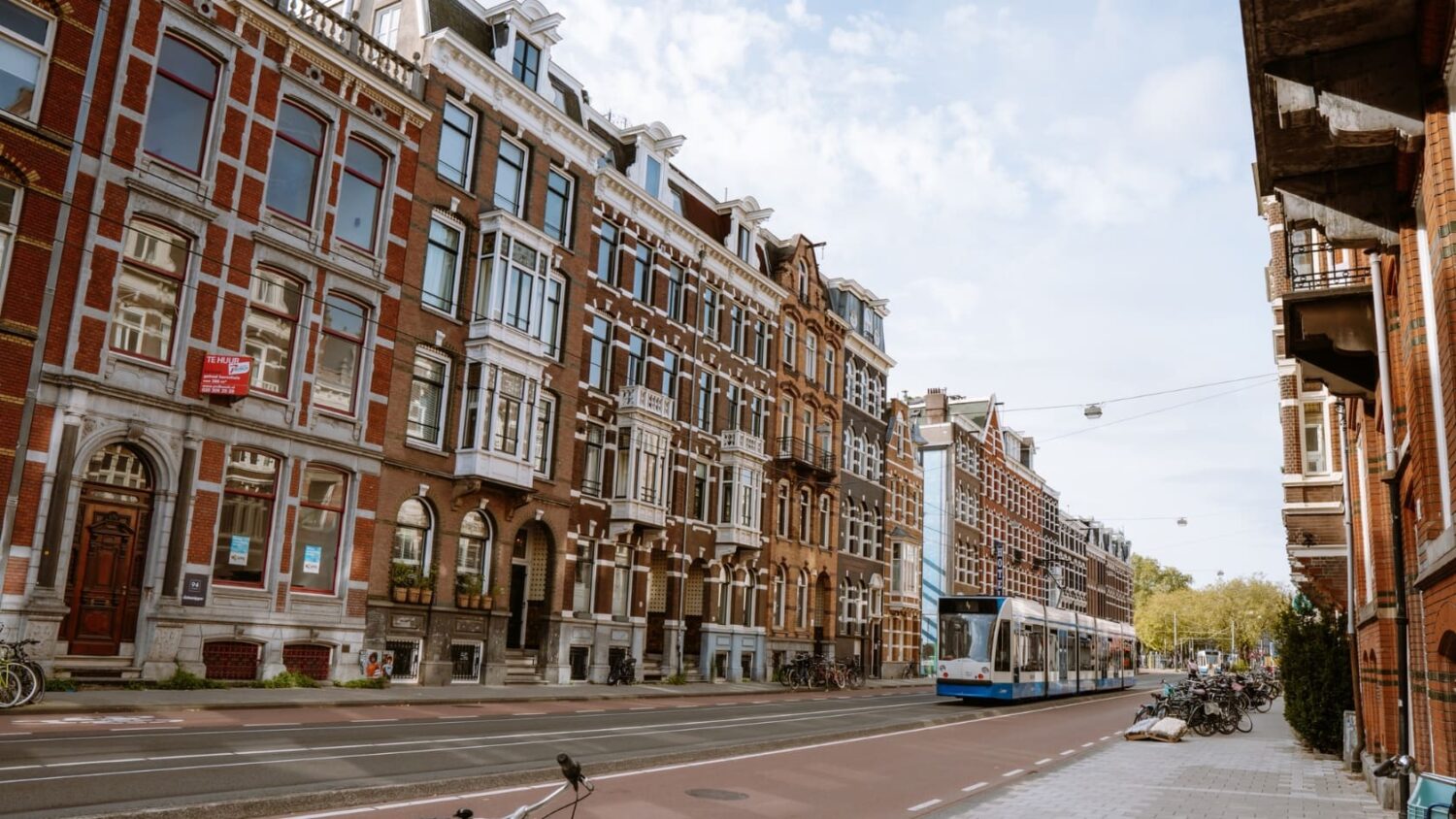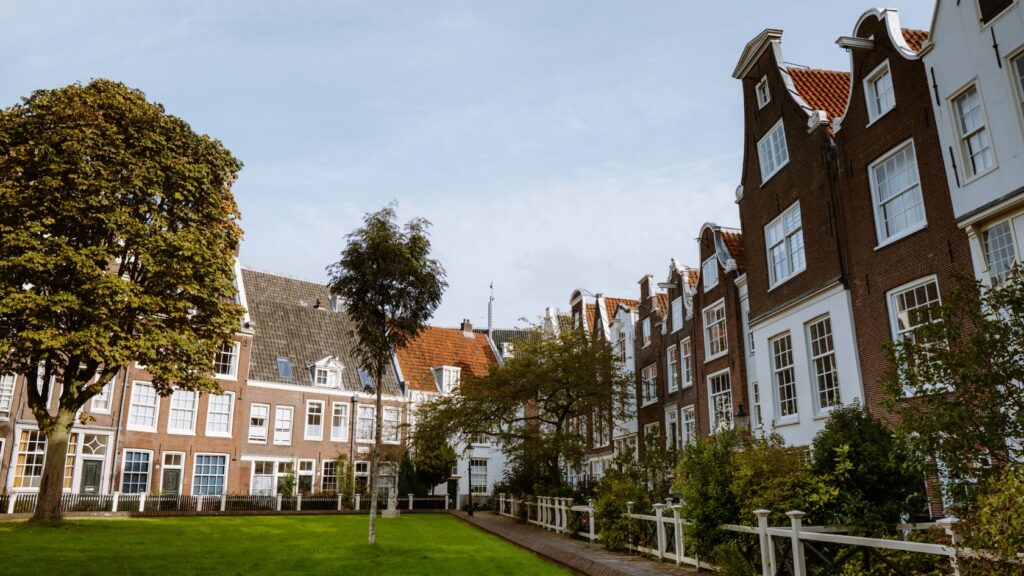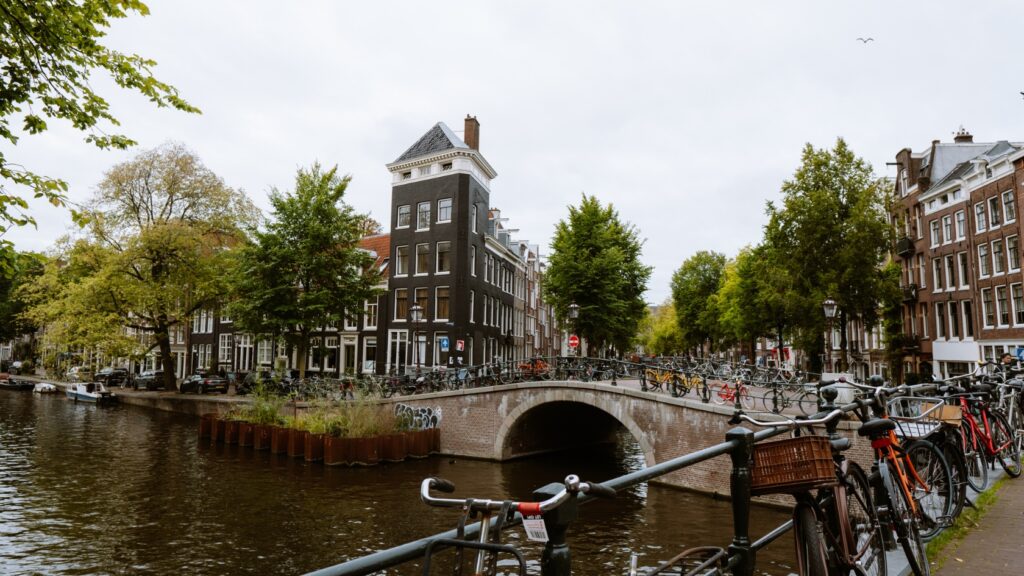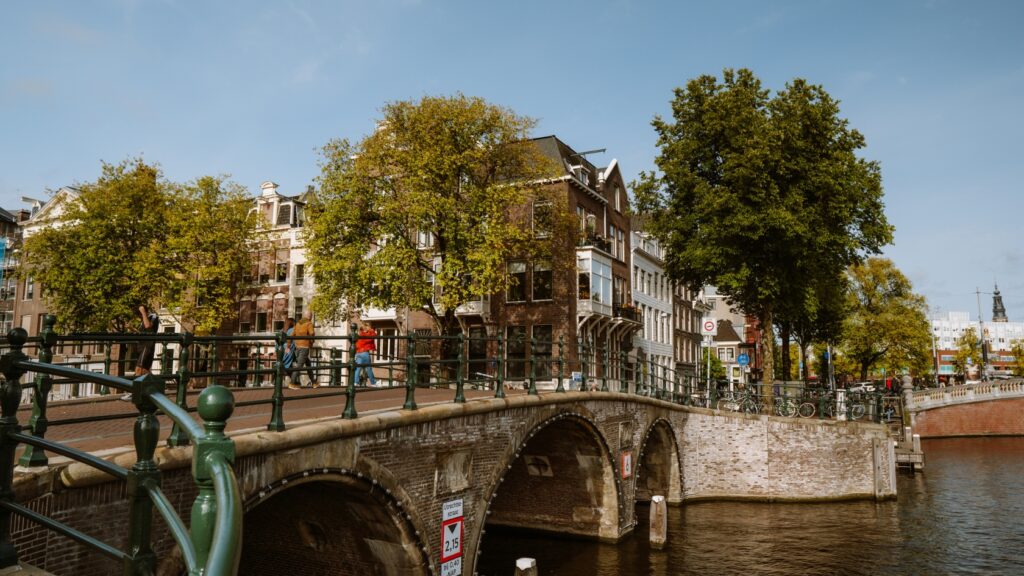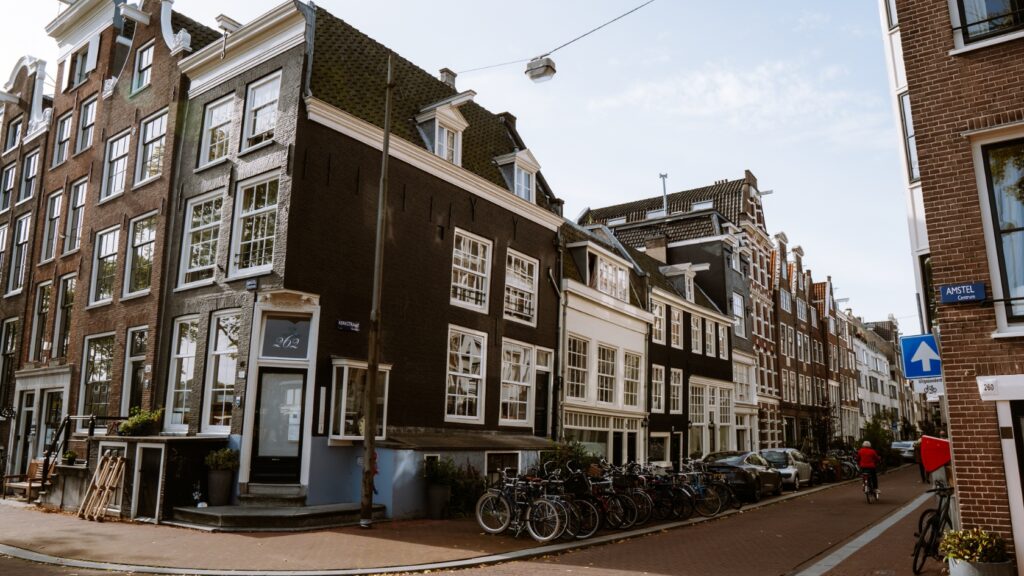In this guide to transport in Amsterdam, we look at everything you need to know before your trip – how the metro and public transport in Amsterdam works, parking and bike hire.
PUBLIC TRANSPORT AND METRO IN AMSTERDAM
AMSTERDAM TRANSPORT
In Amsterdam, you can travel by metro, tram, bus and ferry. Now we’ll take a closer look at the different modes of transport, how to pay for transport and other practical tips.
AMSTERDAM CENTRAAL
Amsterdam Centraal is the main transport hub in Amsterdam. Airport trains, regional buses, 11 tram lines and 4 metro lines stop here. At the rear of the ferry terminal is the platform for ferries to Amsterdam Noord.
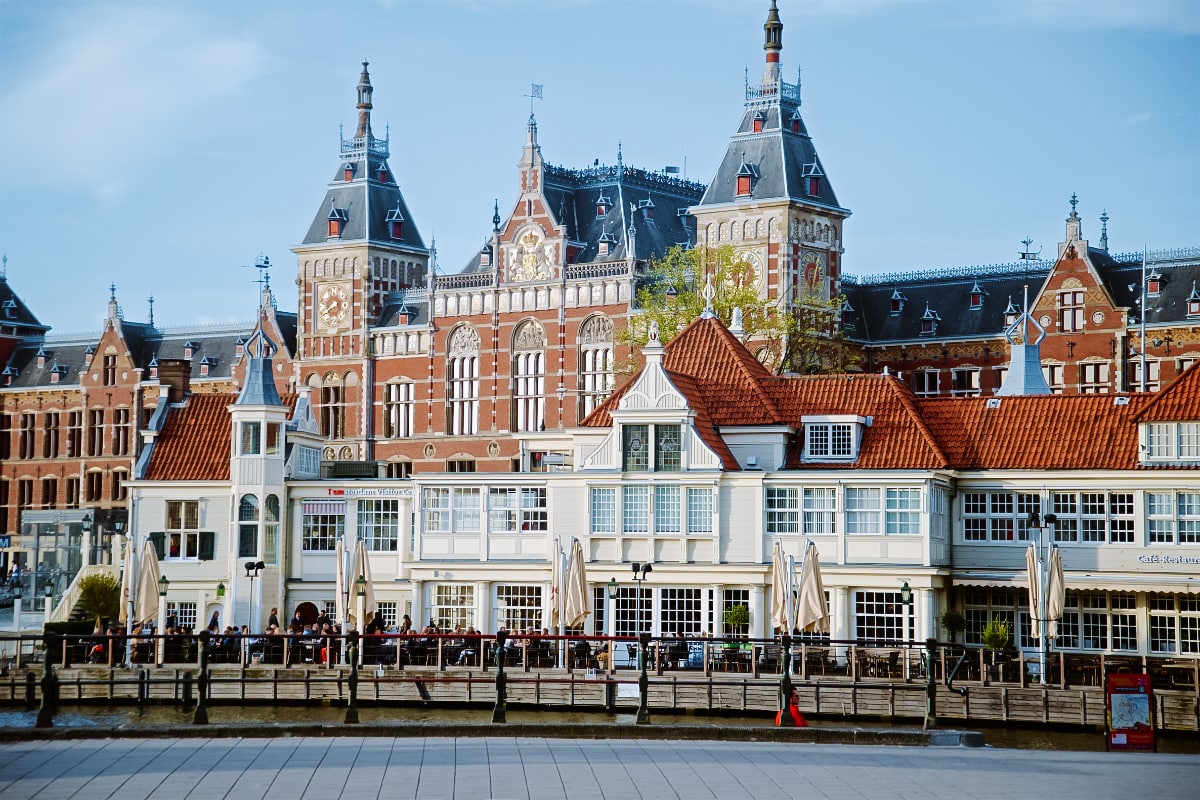
METRO IN AMSTERDAM
The metro, operated by the Gemeentelijk Vervoerbedrijf (GVB), serves as a fast and efficient means of transport that connects the city centre with its suburbs and several neighbouring towns.
The metro network consists of five lines (M50, M51, M52, M53 and M54) and is spread across different parts of the city, including major transport hubs such as Amsterdam Central Station and Amsterdam Amstel.
The stations are generally clean and well maintained, with clear signage in both Dutch and English. The metro is marked with a large blue and white M.
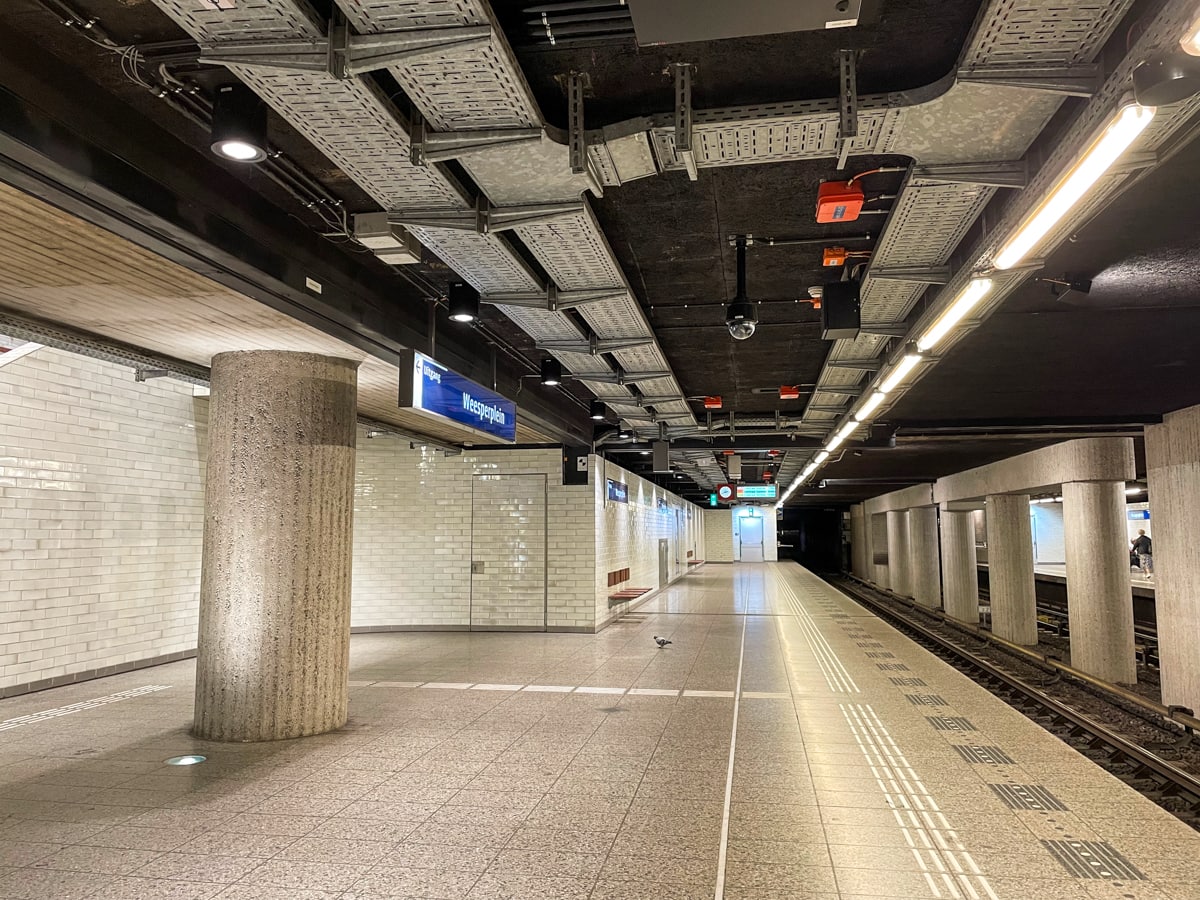
What time does the metro run in Amsterdam?
The metro usually runs from around 6am to midnight, and its frequency varies between 5 and 10 minutes at peak times.
How does the metro work in Amsterdam?
You check in before boarding by attaching your card to the reader and check out again on exit. The metro works in Amsterdam as it does in Prague and other European cities.
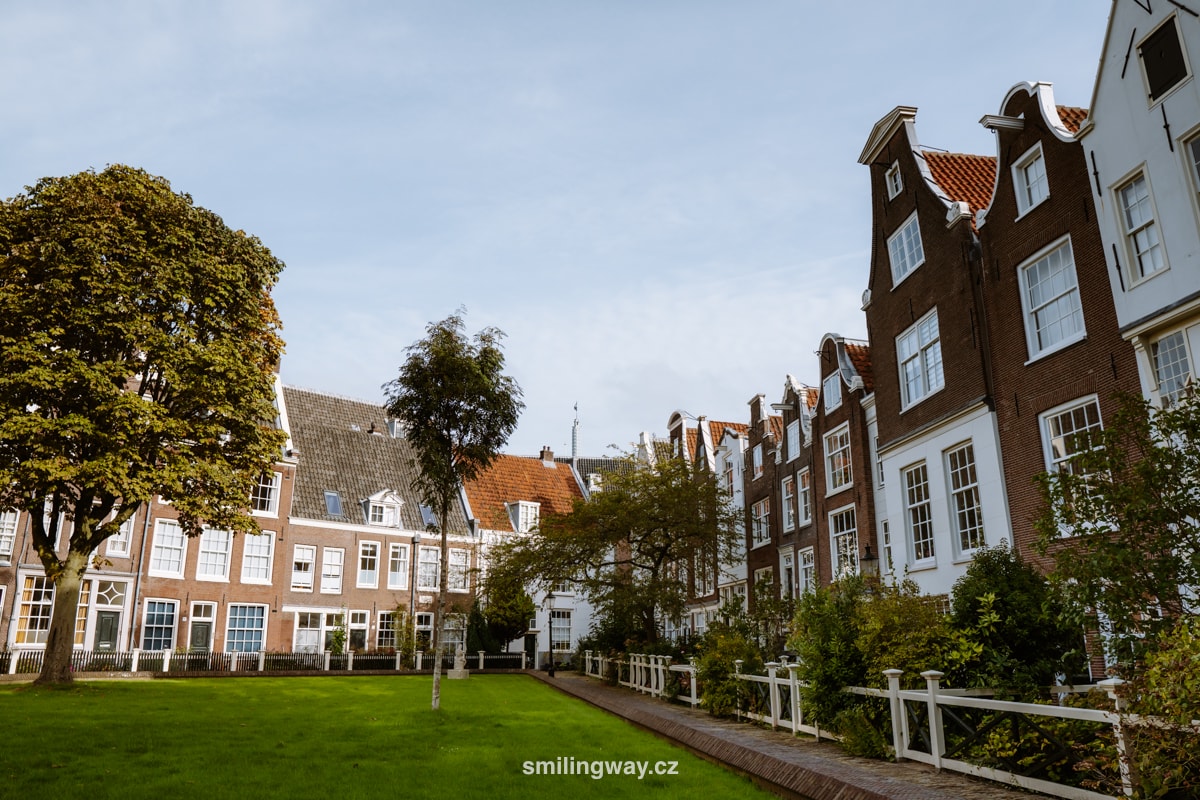
TRAMS
Trams are probably the most famous means of transport in Amsterdam and offer the perfect way to travel through the city’s historic streets. If you’re going to be in the centre of Amsterdam, the trams are the ones you’ll use most often.
The extensive tram network, which is also operated by GVB, consists of many lines connecting key locations in the city, from cultural sites to residential areas.
What time do the trams run until?
Trams run frequently, usually from 6:00 to 00:30.
How do trams work in Amsterdam?
Trams have designated stops throughout the city that are well signposted, including digital displays where you can find tram arrivals in real time. The trams themselves are equipped with voice and digital displays announcing approaching stops, which personally made it much easier for us to find our way around.
Always remember to check in and out with your OV chip card or ticket, depending on how you choose to pay for transport in Amsterdam (more on that in a moment).
You can enter through any door unless otherwise marked on the door. You can tell by the No Trespassing signs on each door.
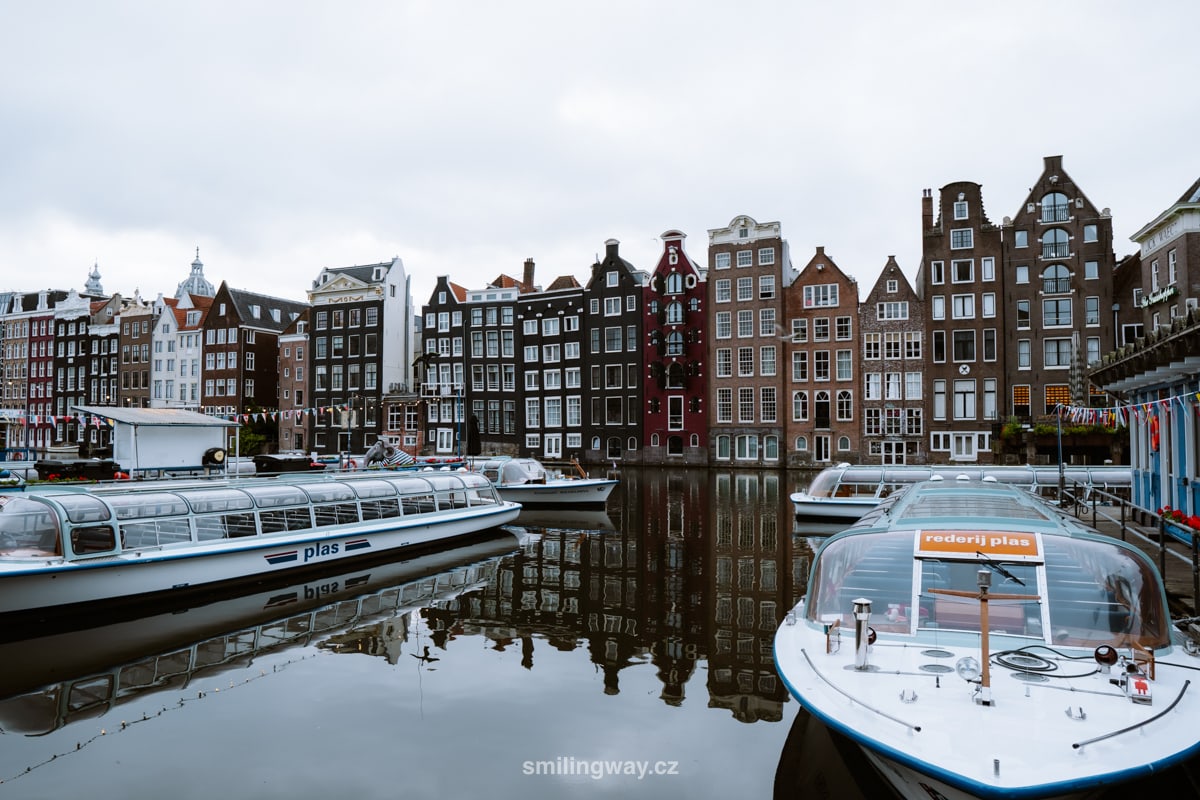
BUSES
Buses in Amsterdam complement tram and metro services by reaching areas not covered by metro and trams. They are particularly useful when travelling along the coast, to the suburbs and other areas outside the central city area.
How do the buses work in Amsterdam?
Tickets and payments for bus travel are governed by the same OV-chipkaart system. It is necessary to check in when boarding the bus and check out when exiting to ensure the correct fare is deducted.
Most buses are equipped with digital screens showing the route and upcoming stops.
Night buses, or “nachtbussen”, provide transport at times when other means of public transport have stopped running, making the city accessible at all hours.
Read: The best hotels in Amsterdam
FERRIES
The ferries in Amsterdam provide a free and convenient way to cross the IJ River, which connects the central part of the city with the northern districts (Amsterdam Noord). They transport cyclists and pedestrians.
The platform is located behind Amsterdam Central Station. The ferries are spacious, often with dedicated spaces for bikes and mopeds. You will enjoy great views of the coastline.
These ferries are operated by GVB and run frequently, with some routes operating 24 hours a day. You don’t need to buy a ticket or OV-chipkaart for most ferry lines, as they are free.
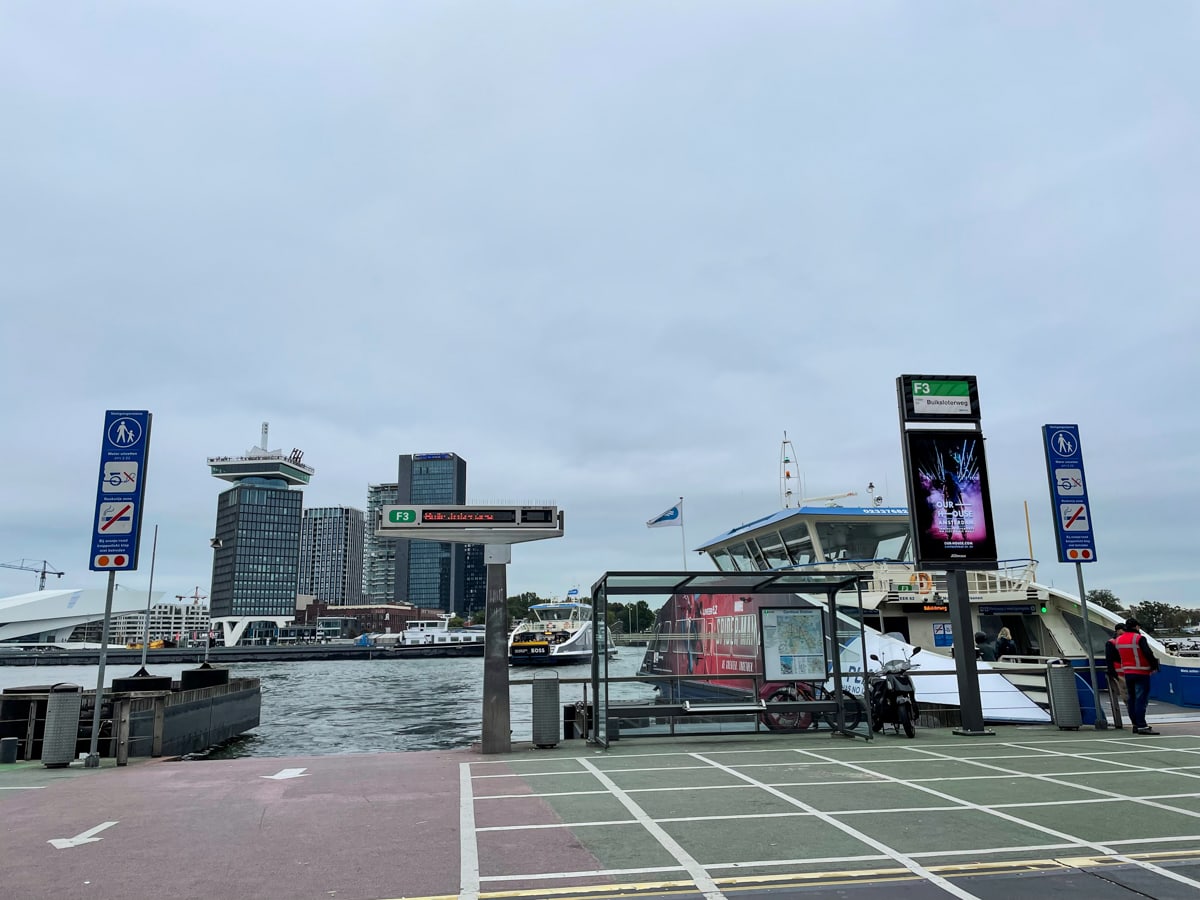
HOW TO PAY FOR TRANSPORT IN AMSTERDAM
Paying for transport in Amsterdam is simplified thanks to the OV-chipkaart system, a contactless smart card used to access all modes of public transport in the Netherlands.
Here you will find an overview of how you can pay for shipping using OV-chipkaart and other available options:
OV-chipkaart (chip card for public transport):
OV-chipkaart is produced in three main variants:
Personal OV-chipkaart: This is a card with the holder’s photo, name and date of birth. It can be linked to a bank account for automatic top-ups and is required for monthly or annual subscriptions. It is also the only type of card that allows you to travel at a discount if you qualify (e.g. for seniors or students).
Anonymous OV Chip Card: As the name suggests, this card is not tied to a specific person and can be used by anyone. It can be purchased from ticket machines, ticket attendants and some retail outlets.
Disposable OV-chipkaart: This is a card designed for one-time or limited use, usually for tourists or infrequent travellers. It is available with specific pre-loaded travel products such as an hourly ticket or a day ticket.
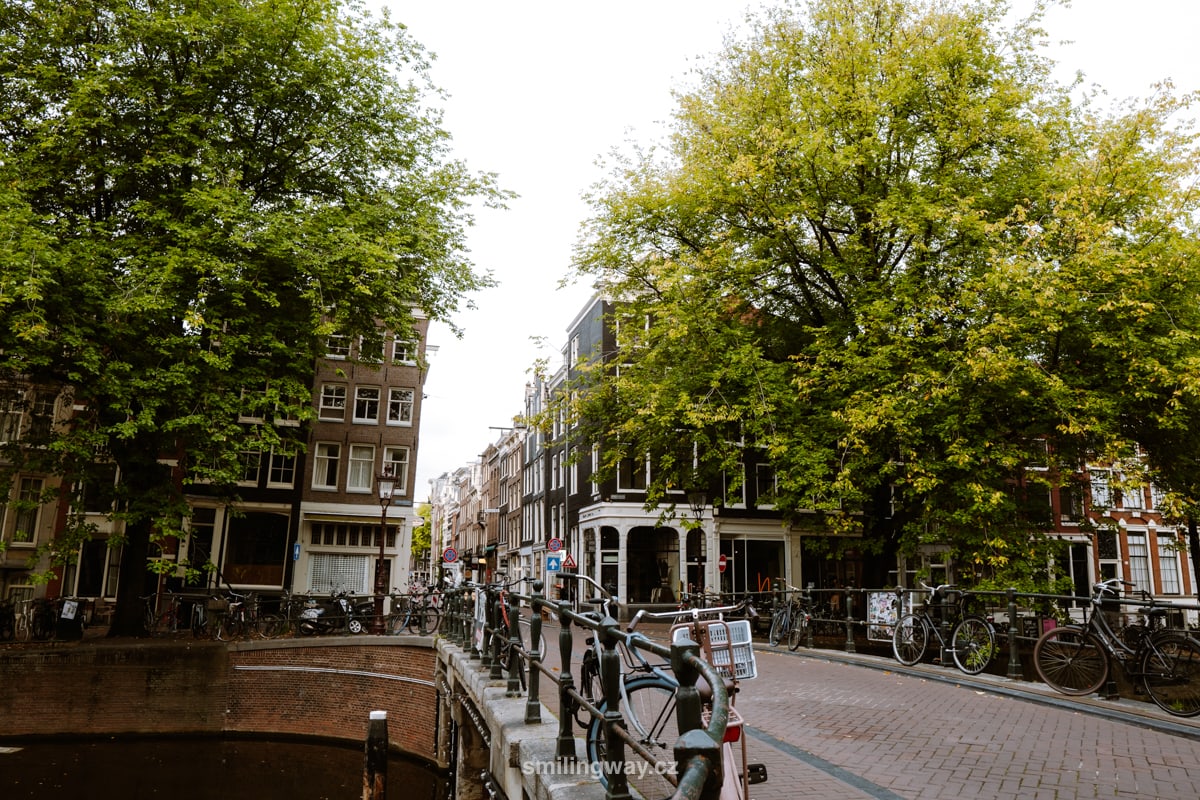
Using OV-chipkaart:
- Before starting your journey, you need to “check in” by attaching your card to the reader on the station platform or in the vehicle.
- When you reach your destination, “check out” using the same procedure. The correct fare amount will be automatically deducted from your card balance.
- Make sure you have a minimum balance on your card (usually €4 for trams/buses and €20 for trains) to travel.
Single tickets
For those who do not have an OV chip card or need a single ticket, vending machines are located at most metro stations, train stations and some tram/bus stops.
A single ticket costs €3.40 and is valid for 60 minutes with the option of changing trains. A better option is to buy single or multi-day tickets (see next point).
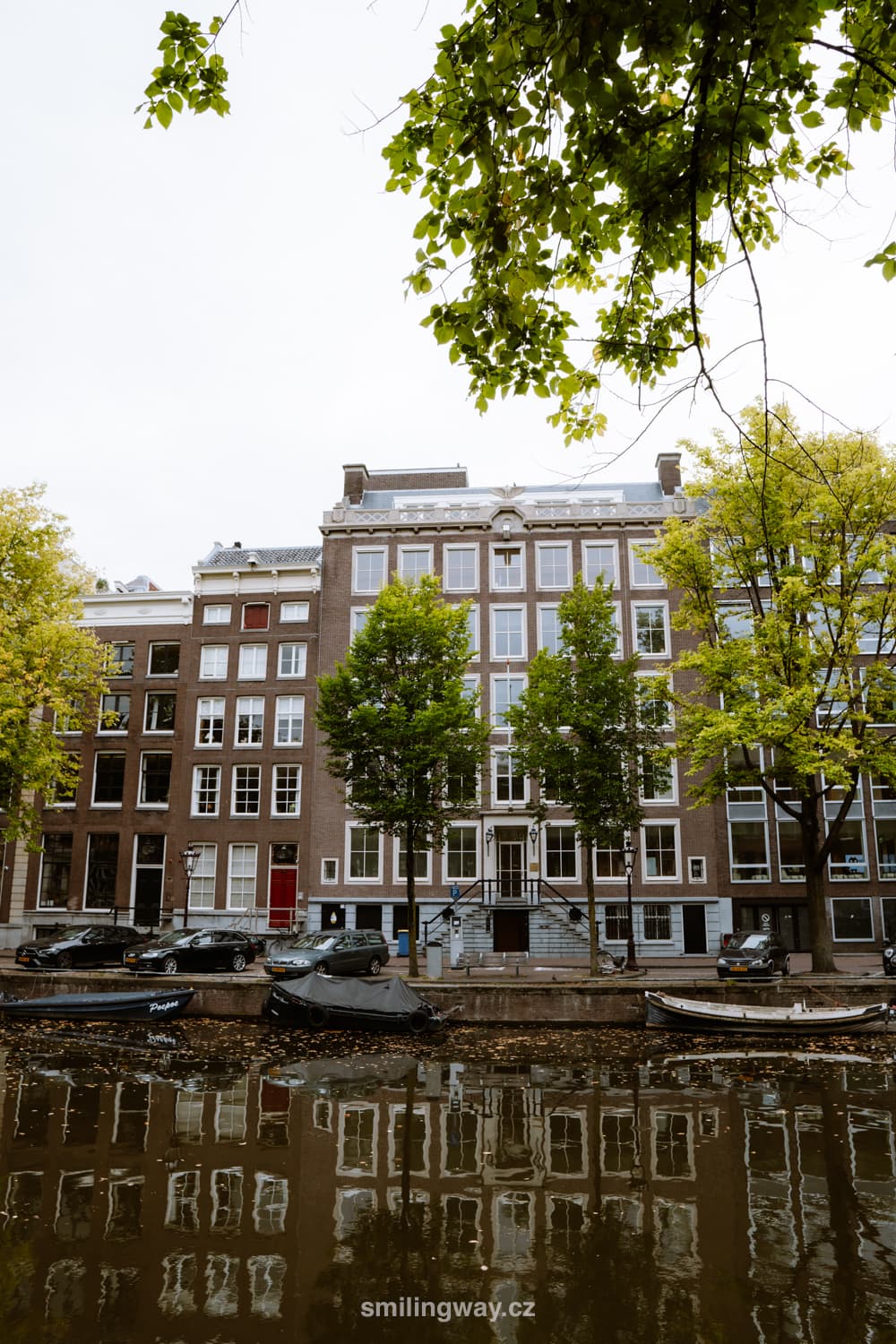
Single or multi-day tickets
Day or multi-day tickets can offer unlimited travel and cost savings. The ticket works like a chip card – you attach it when you board and when you get off.
The price varies depending on the number of days, respectively. hours you purchase your ticket:
- 24 hours – 9 €
- 48 hours – 15 €
- 72 hours – 21 €
- 96 hours – 26,50 €
- 120 hours – 33 €
- 144 hours – 37,50 €
- 168 hours – 41 €
Tickets are valid in hours, i.e. if you mark your ticket at 14:00, it will be valid until 14:00 the next day.
They can be purchased online, at ticket machines, at GVB service points and often at tourist information centres.
There are several types of day/weekend tickets to choose from:
- Ticket for transport in Amsterdam – buy here
- Ticket for transport in Amsterdam including airport transfers – buy here
- Regional ticket for all transport in and around Amsterdam – buy here
After purchasing your ticket, you will receive a barcode, which you simply scan in the machine on the bottom right hand side (see below) – you will then be issued a ticket. The machine is located at the airport station to the left of the yellow and blue machines – see photo below.
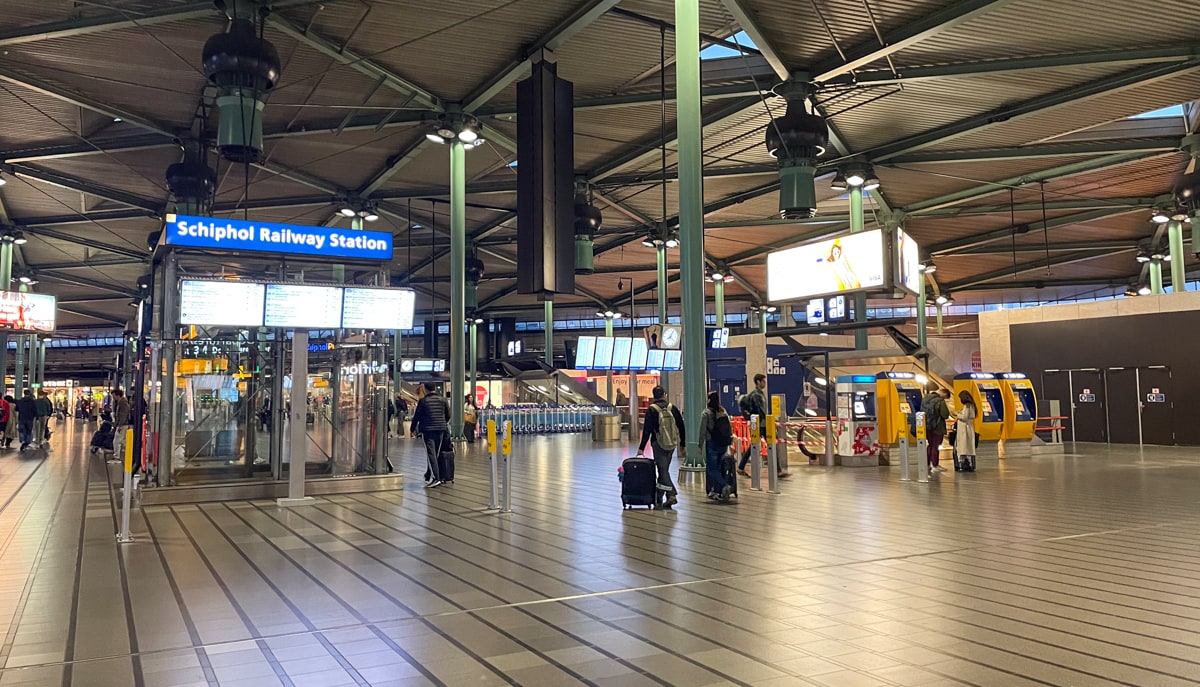
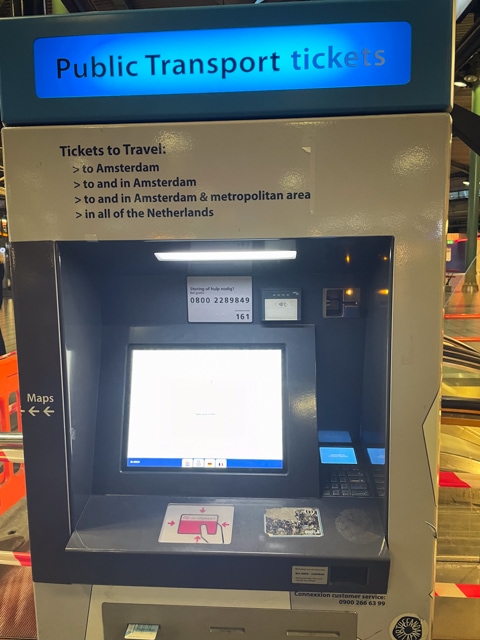
Contactless card
A relatively new way to pay for transport in Amsterdam is to use a contactless card. “1 card = 1 person” applies and you have to comply with the payment method (for example, you can’t pay with your card on boarding and with your watch on exit). This way, you are only really deducted what you have driven.
Tip: Always swipe your card on entry and exit so that you only pay for what you have actually driven.
CANAL CRUISES
AMSTERDAM TRANSPORT
One of the best ways to get to know a city is cruise through Amsterdam’s canals. The city is literally intertwined with canals – there are 165 canals in Amsterdam, totalling 71 km in length. More than 1,700 bridges cross the canals, which is 4 times more than in Venice.
Walking around the canals and sailing across are one of the best things to do in Amsterdam. You are constantly discovering new and new corners.
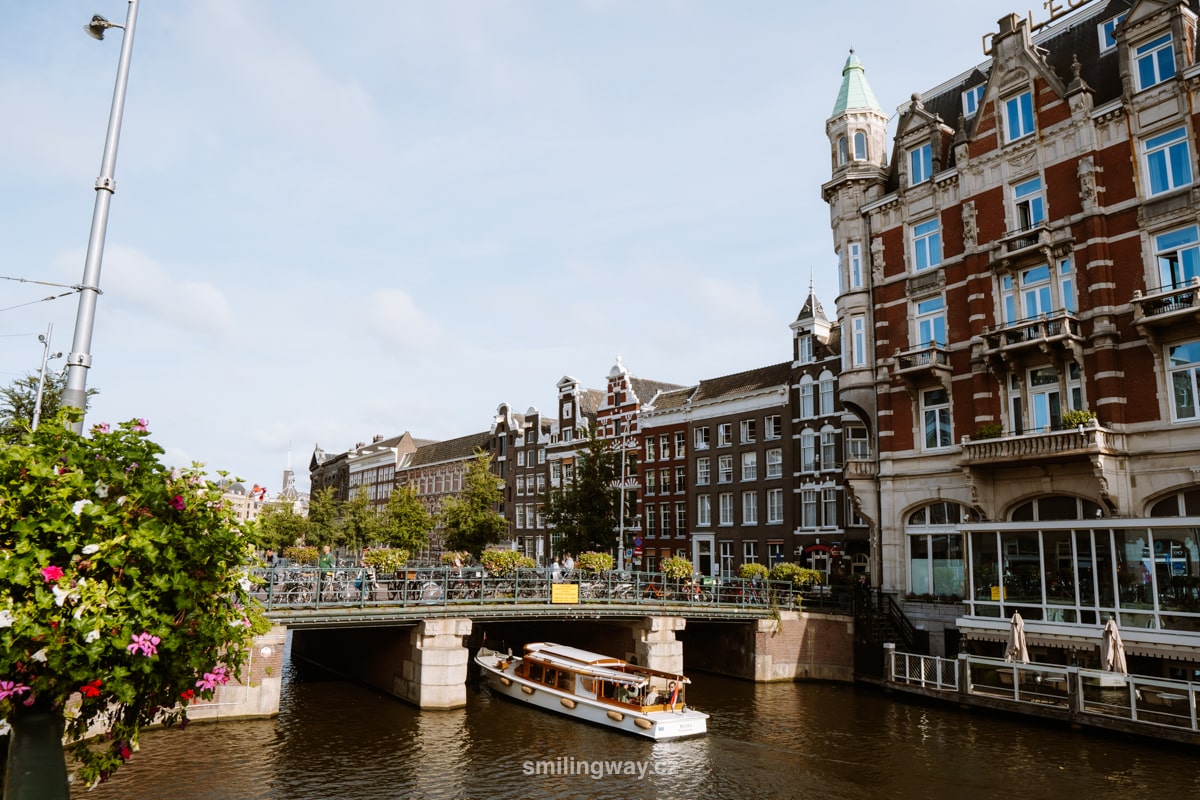
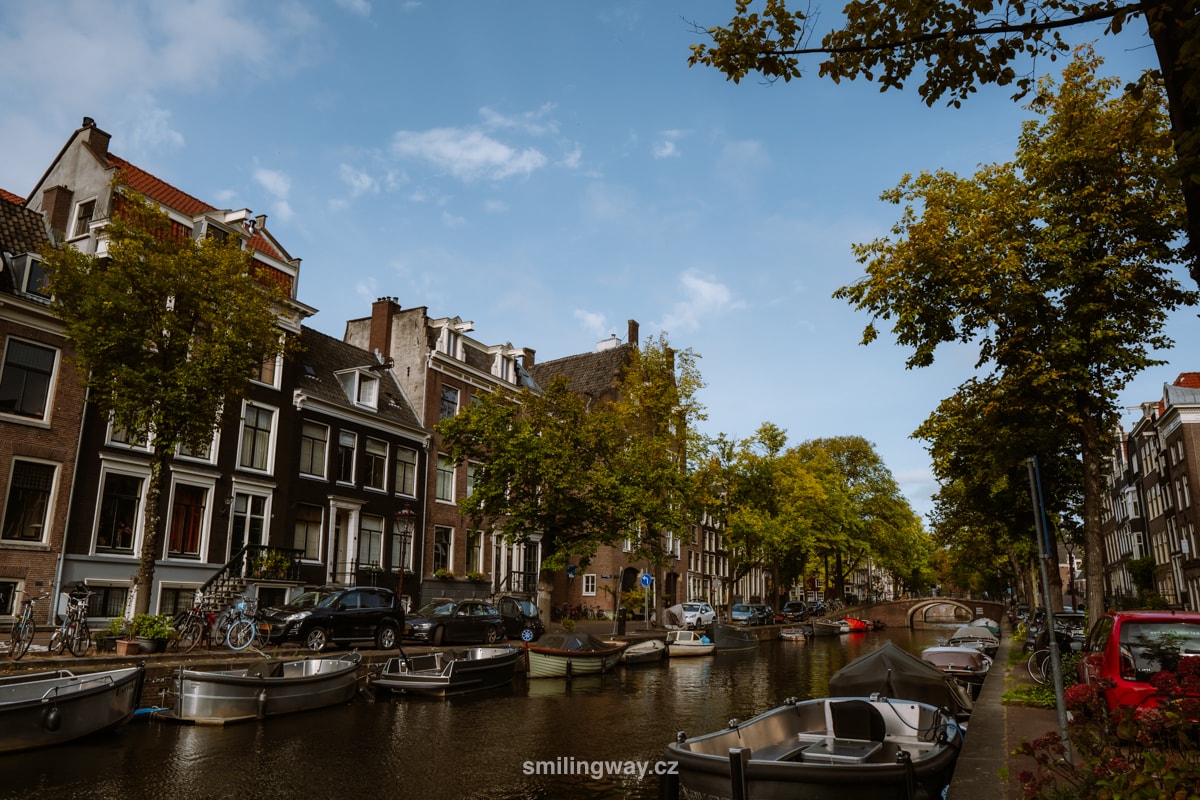
Ships depart from various locations across Amsterdam – depending on which cruise you choose.
You can choose between a classic cruise, an open boat cruise or an evening romantic cruise. Many of the bridges are beautifully lit in the evening, so an evening cruise is the best end to the day.
Prices start at 16 € for a 1-1.5 hour cruise. Book your cruise here.
SIGHTSEEING BUSES
AMSTERDAM TRANSPORT
Using the HOHO (hop-on-hop-off) bus lines in Amsterdam is a popular way to see the city at your own pace. These buses follow a specific route that includes the main tourist attractions and places of interest.
Tip: You can buy your ticket online and get a discounted price.
Most HOHO buses run from early morning to evening (may vary by season). They offer audio commentary in several languages (including English), which provides information about the history of Amsterdam and the sights you pass by.
The beauty of the HOHO bus lies in its freedom. Get off at any stop you are interested in, explore the area and then get on the next bus to continue your journey.
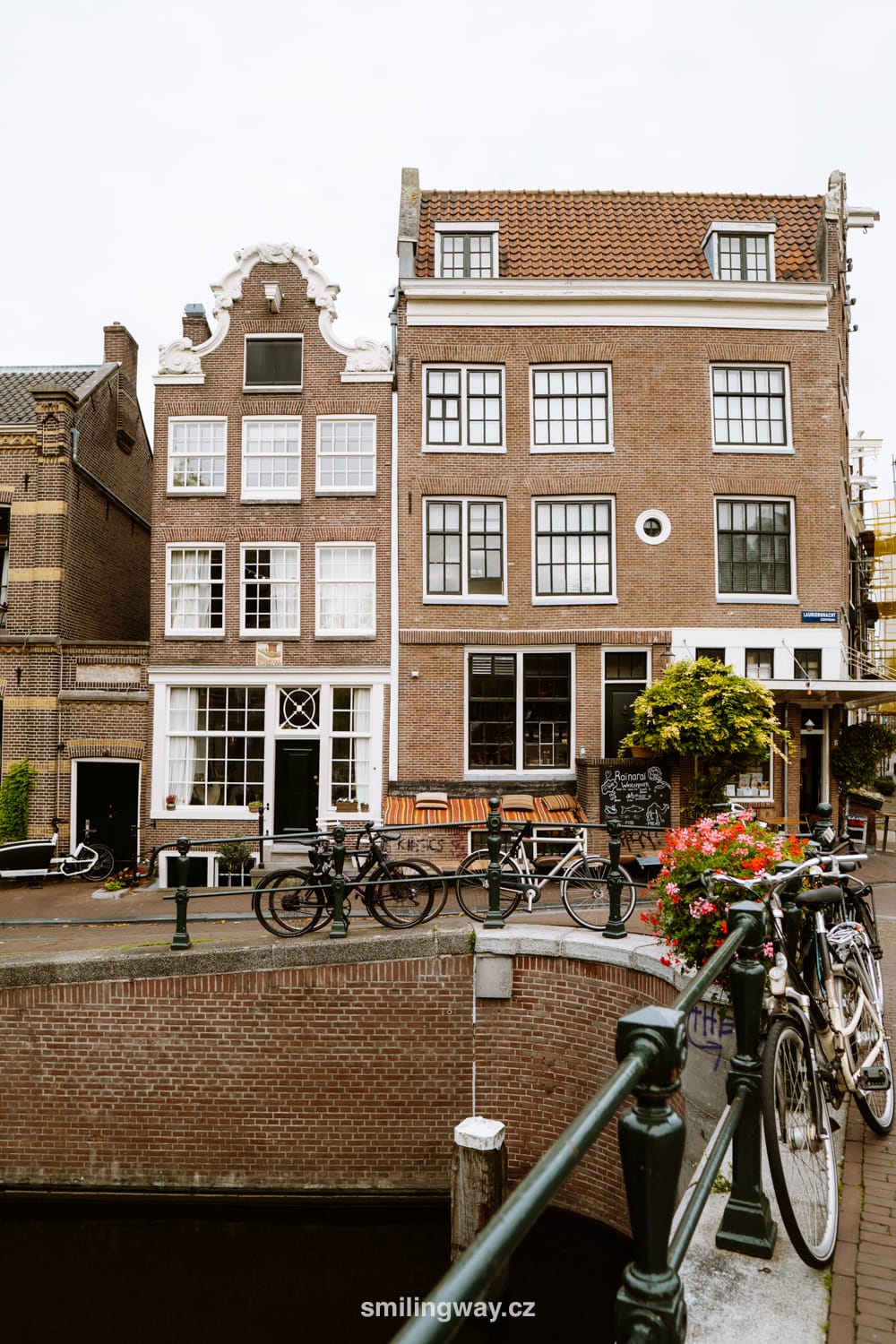
AMSTERDAM BY CAR
Dutch motorways are not subject to tolls or vignettes for vehicles up to 12 tonnes.
The A10 bypass runs around Amsterdam, from which you can reach the city centre via 8 exits, signposted S101-S118. It’s a good idea to find which S-route to take in advance to get where you need to go as quickly as possible.
The historic centre is especially suitable for bicycles and scooters. It is better to find accommodation on the outskirts of the city and take public transport from there.
Please note: Check beforehand whether your vehicle is allowed to enter a low-emission zone.
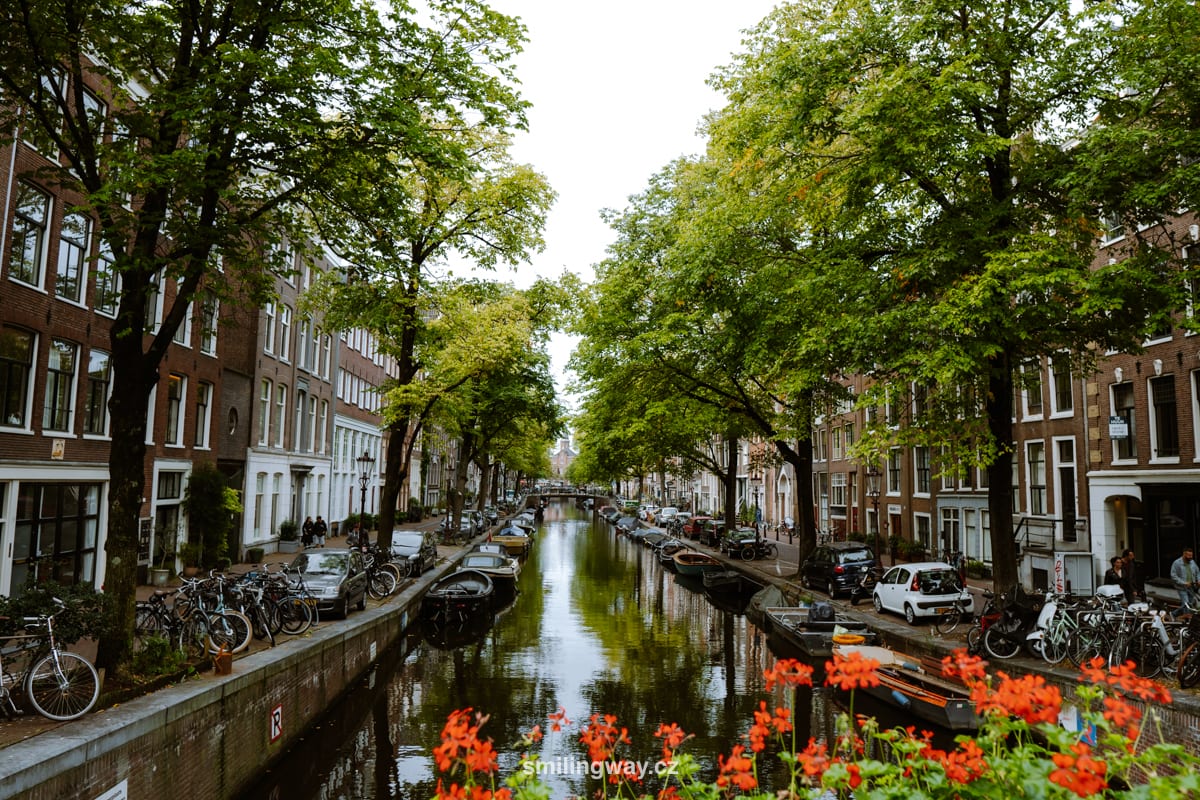
PARKING IN AMSTERDAM
Parking in Amsterdam is charged. Only the blue marked parking areas are free of charge, but they are only for short-term parking.
Parking prices vary depending on where you park. Find out more about the tariff zones on this map for parking in Amsterdam. Rates are per hour and most often around €7.50 in the centre.
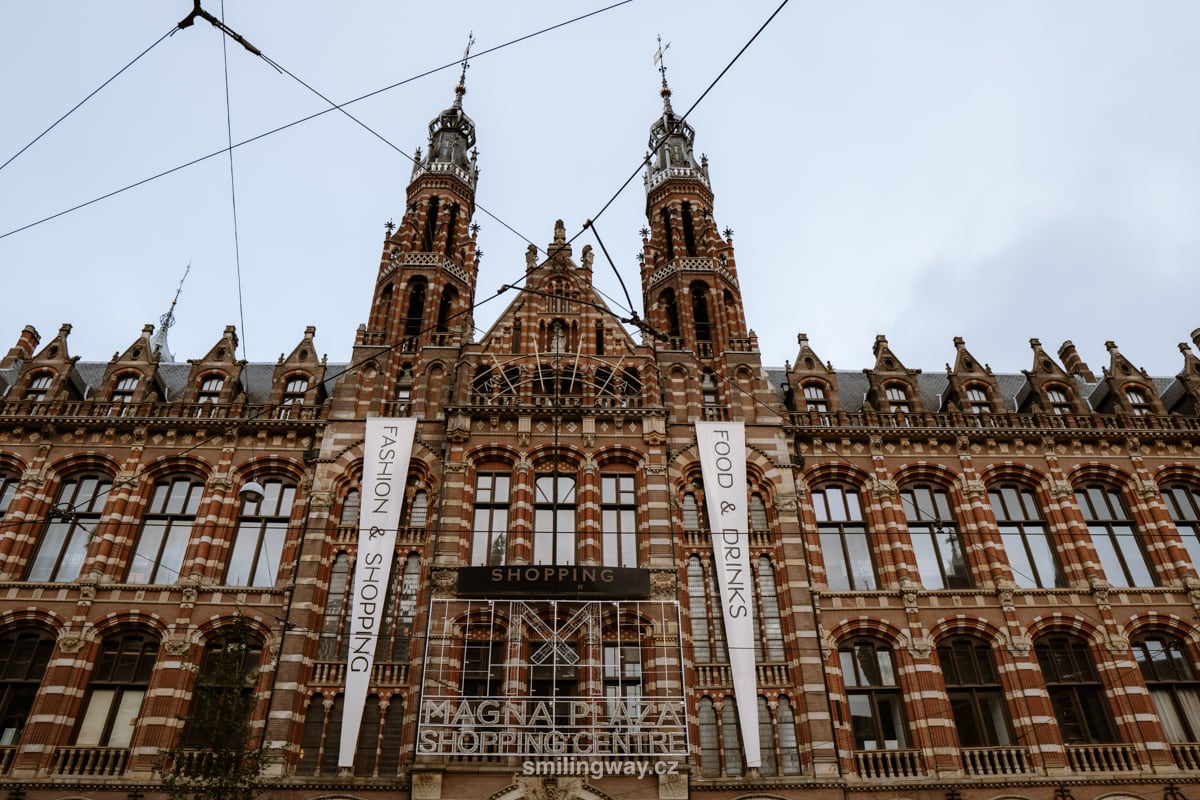
Prices for parking
On the map you can see the P+R zones, which are located near the motorway on the edge of the city and have excellent public transport connections to Amsterdam. The maximum parking time is 96 hours.
Parking here is very cheap, and even cheaper if you buy an OV card or a paper P+R ticket at the blue machine on site within an hour.
This also applies to the return journey – you must pay for parking and leave within one hour of leaving public transport.
Detailed information can be found here. Considering the hourly rates for parking, this is the cheapest way to travel by car to Amsterdam.
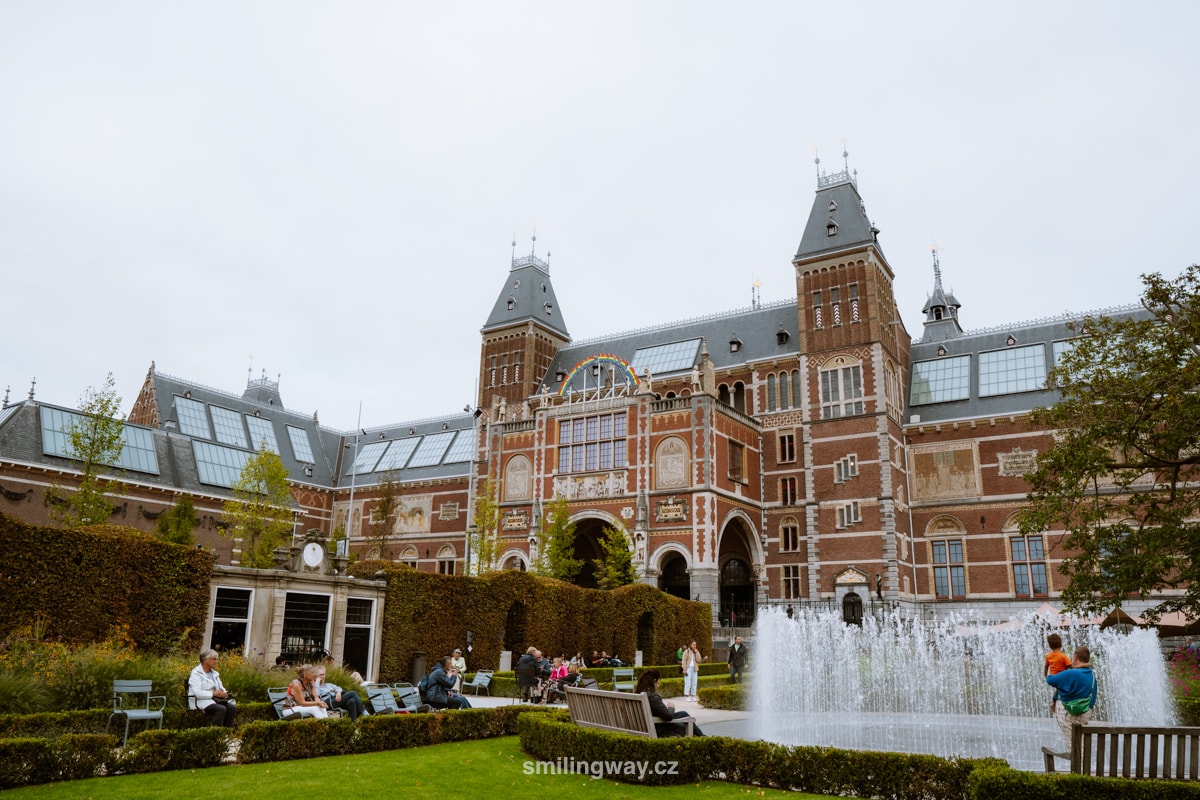
RENT A BIKE IN AMSTERDAM
Almost everyone in Amsterdam rides a bike. There are over 800,000 people living in Amsterdam and over 900,000 bicycles. Bicycles have their markings at traffic lights and there are bike lanes everywhere. Maybe that’s why the Dutch are so slim, vital and good-tempered.
The roads are narrow and there are not many cars in the centre.
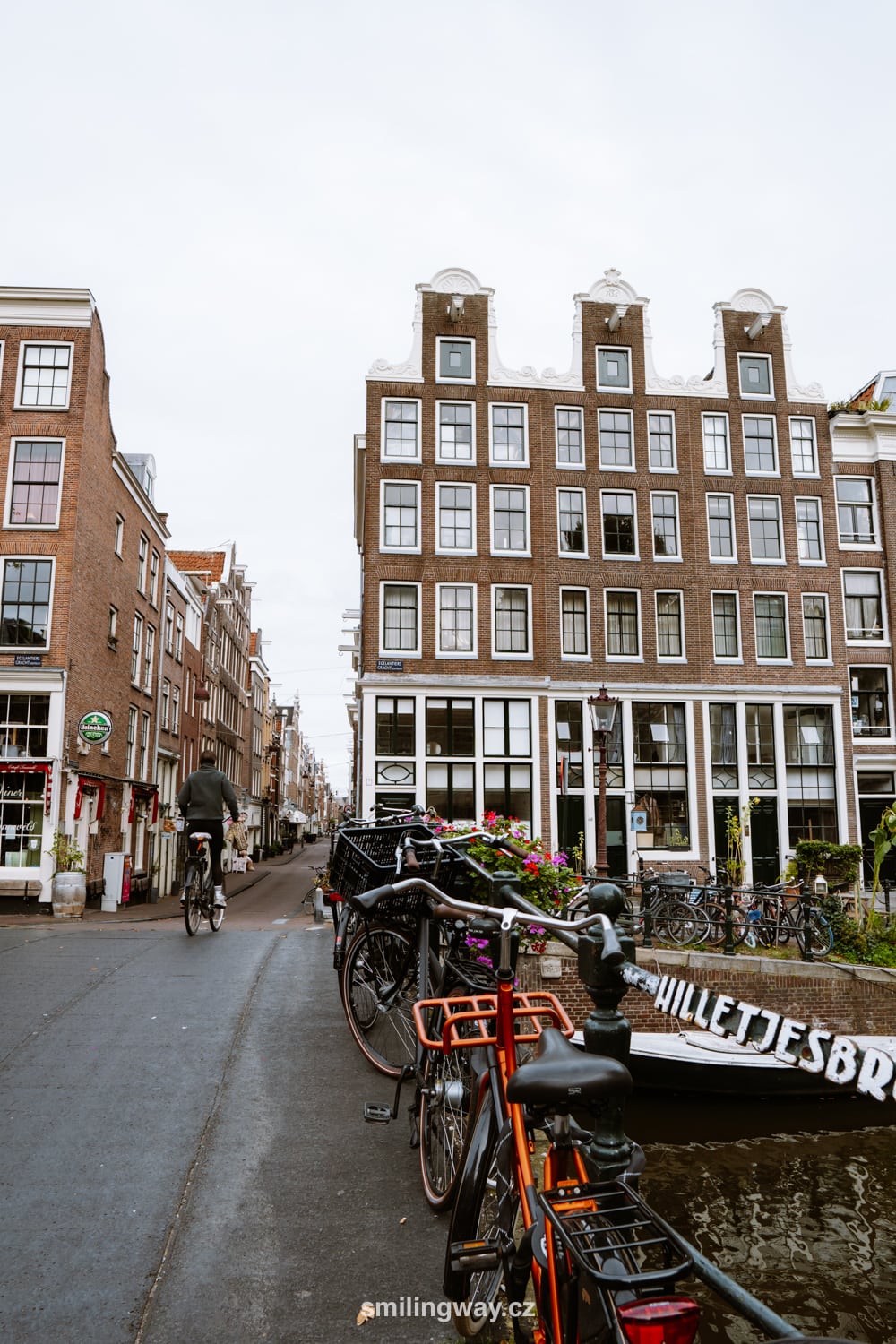
You can take your bike to the park, and if you feel confident about your ride, head into town or along the canals. Just watch out for the canals, because up to 15,000 bikes are caught here every year. In addition, cyclists always have the right of way in Amsterdam, so be careful when walking around the city.
Bicycle rentals are scattered throughout the city. Hire for an hour costs around €3 and for the whole day from €10. Donkey or MacBike is a popular rental service. You can book your bike here.
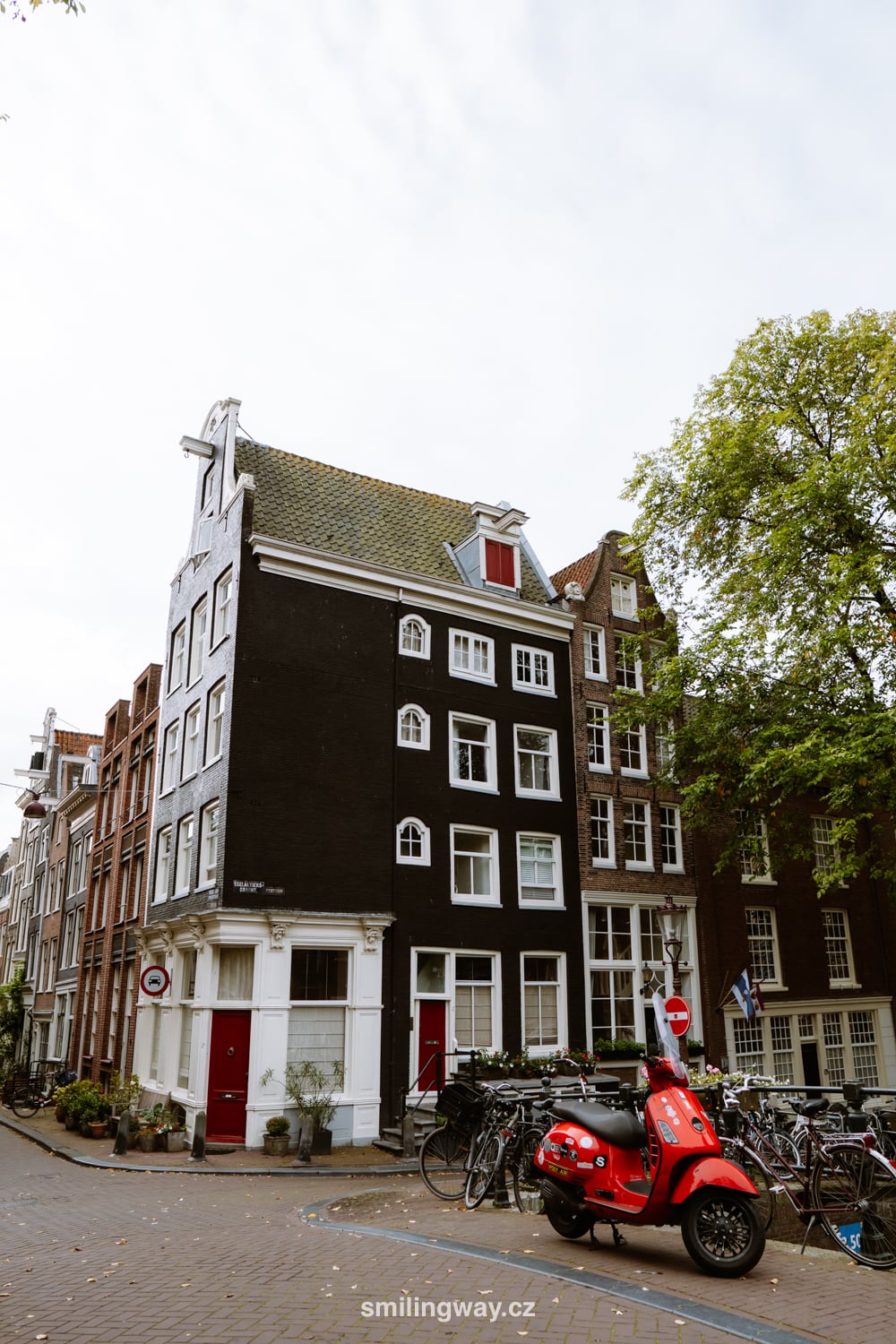
AMSTERDAM AIRPORT SCHIPHOL
HOW TO GET TO THE CENTRE
Schiphol International Airport is located south-west of Amsterdam. The airport is well signposted and often praised as the best airport in Europe, despite being the third busiest airport in Europe. It’s easy to find where the train, bus and where to go.
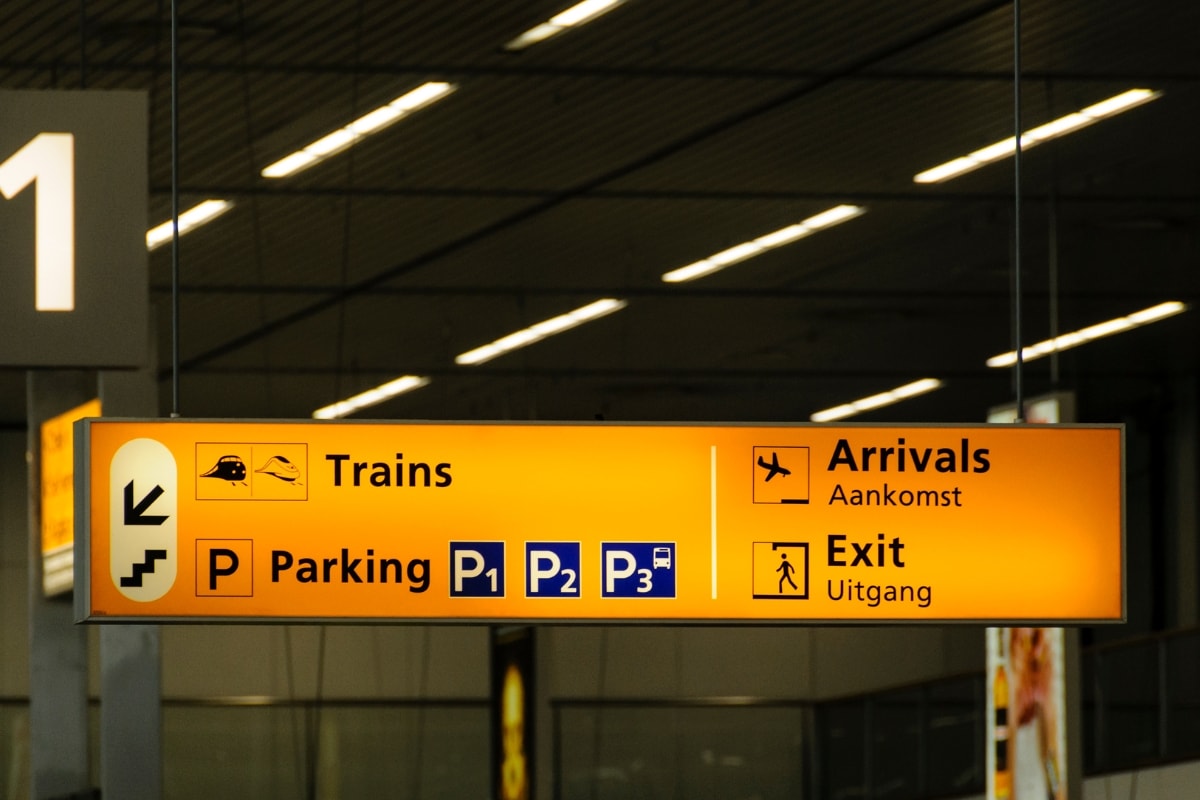
How to get from Schiphol Airport to the city centre?
There are 2 basic options to get from Schiphol Airport to Amsterdam city centre by public transport:
- direct train from the station, located directly below Schiphol Plaza at the airport. A train ticket costs €5.90 and is valid for any connection on the day of your choice. The train stops in Amsterdam at Amsterdam Centraal Station and the journey takes a quarter of an hour.
- red Conexxion 397 bus, which runs from platform B17 directly in front of Schiphol Plaza at the airport. After purchasing tickets you can go straight to the bus and board. A one-way ride costs €6.50, a return ticket is more economical. The bus stops at several stations in Amsterdam and takes about 35 minutes to the final station Elandsgracht on the edge of the city centre.
☞ Are you planning to use public transport in Amsterdam? Look for day/weekend tickets. With it, you get city transport from GVB in Amsterdam (metro, trams, buses) and airport transport (trains and buses 397) included. At the airport, just scan the barcode in the machine and a chip card will come out.
Do you have a question about Amsterdam transport? We’ll be happy to answer it in the comments below. Have a safe journey!
MORE INFORMATION ABOUT AMSTERDAM
AMSTERDAM: Plan your trip with our detailed travel guide and things to do in Amsterdam. Here is the itinerary for 3 days in Amsterdam. Do you have less time? See the route map for 1 day in Amsterdam.
In this article, we share tips on things to do in Amsterdam with children.
Find out about Schiphol Airport and how to get from the airport to the city centre. Here are the best hotels in Amsterdam for every budget.
HOW TO SAVE IN AMSTERDAM: Amsterdam Pass is one of the ways to save money on sightseeing in Amsterdam.
Summary: Transport and metro in Amsterdam
Amsterdam offers a range of public transport options, including trams, buses, metro and ferries.
The main payment method is the OV-chipkaart, a contactless chip card. You can also buy single-day or multi-day tickets, mobile tickets or single tickets at vending machines. You can also use your contactless payment card instead of the OV-chipkaart.
Yes, the OV-chipkaart card is valid on trams, buses, metro and some Amsterdam ferries.
